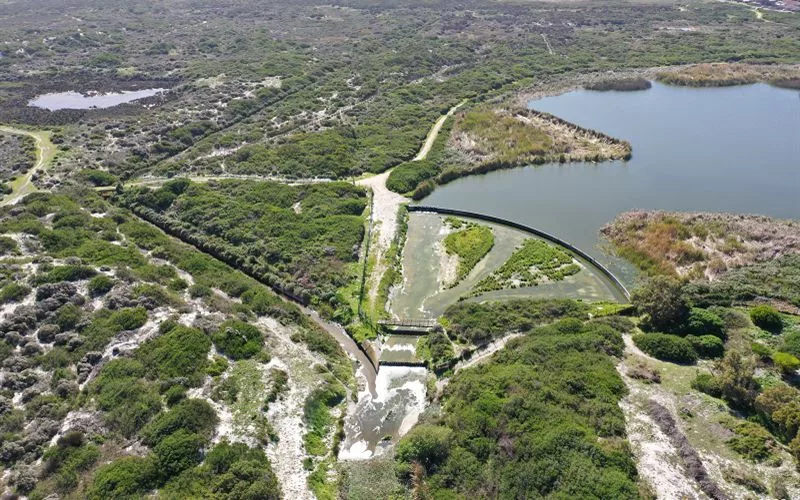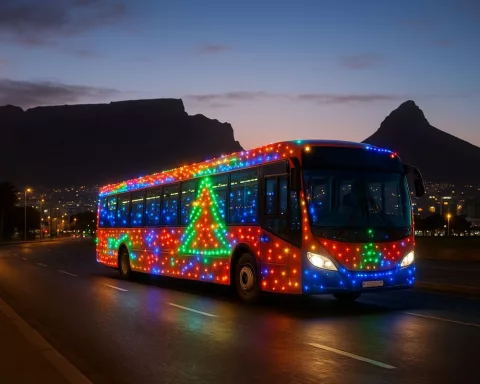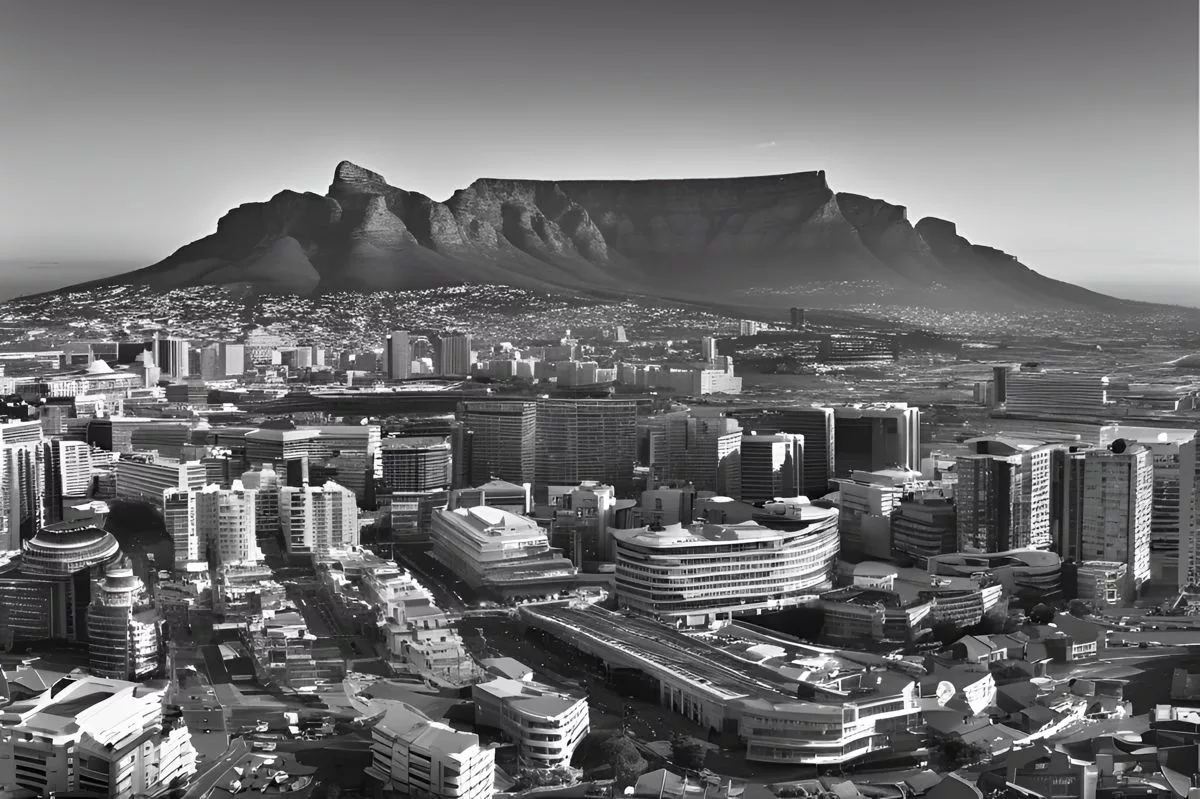Cape Town’s Zeekoevlei and Rondevlei weirs are undergoing a comprehensive overhaul to improve the quality of water and restore aquatic life. The project involves installing mechanically operated sluice gates, creating fish swim ways, and modifying existing structures. The City is encouraging public participation and expects construction work to begin by September 2025, lasting at least 13 months, reflecting its commitment to improving water quality and fostering community participation in environmental projects.
Cape Town plans to revitalize Zeekoevlei and Rondevlei weirs to improve water quality and replenish aquatic life. The project involves installing mechanically operated sluice gates, creating fish swim ways, and modifying existing structures. The overhaul will enhance the nursery function of the estuaries and upgrade the conservation status of estuary-dependent marine fish species. The City is encouraging public participation and expects construction work to begin by September 2025, lasting at least 13 months. This initiative reflects the City’s commitment to improving water quality and fostering community participation in environmental projects.
The City of Cape Town has unveiled an extensive redevelopment plan to improve the quality of water and replenish the aquatic life at Zeekoevlei and Rondevlei weirs. Nestled within the False Bay Nature Reserve, these weirs hold substantial importance to the Ramsar site, an area noted for its international significance by the Ramsar Convention on Wetlands.
The project seeks to augment ongoing medium-term endeavors, such as the dredging of Zeekoevlei, and is expected to make significant strides in enhancing the overall water quality of the site. The existing weir conditions, constructed back in the 1950s, block marine and estuarine fish from migrating into and from the lakes, known locally as vleis, and limit the amount of water that can be drained, which is seen as a hindrance.
2. Project Highlights: Practical and Ecological Aspects
Currently, the weirs use penstock sluice gates, operated manually, which allow for a yearly ‘drawdown’ – a process of reducing the water level to a minimum depth, typically undertaken at the end of the summer sailing season. The aim of this process is to eliminate nutrient-rich water and sediment, subsequently increasing the capacity of the vleis to accommodate the winter rainfall and minimize flooding risks in nearby areas.
However, the proposed overhaul involves installing mechanically operated sluice gates and lowering the weirs at both sites. This would enable faster and lower-level drawdowns. While preserving the original penstocks, the Zeekoevlei weir would be updated with a new sluice channel, equipped with channel gates. This will complement the existing wooden penstocks.
The redevelopment also emphasizes the creation of fish swim ways, structured channels allowing the uncomplicated movement of fish. By enabling the reintroduction of native estuarine fish into the vleis, the swimways facilitate the restoration of fish diversity and abundance, thereby significantly enhancing the nursery function of these estuaries and upgrading the conservation status of estuary-dependent marine fish species.
3. Project Impact: Anticipated Benefits and Practical Aspects
The proposed modifications carry multiple definitive benefits. The deeper and more flexible annual drawdowns will allow for efficient sludge and reed removal while also aerating the exposed sludge. The newly designed weirs will facilitate a deeper drawdown level, substantially enhancing the vleis’ water quality.
Furthermore, the redesigned Rondevlei weir will heighten the groundwater table in the southern section of the nature reserve. The alterations will enhance flexibility and encourage the natural movement of estuarine fish into the vleis.
In terms of structural changes, the project will involve modifying the existing Zeekoevlei weir for rapid lowering, building a new Rondevlei weir with more downstream sluice gates, constructing a fish swim way between the new Rondevlei weir and modified Zeekoevlei weir, and installing a fish ladder at the Zeekoe culvert bridge to assist fish movement from the lower Zeekoe River upstream towards the vleis.
4. Environmental Considerations and Public Participation
To fulfil the legal requirements stipulated by the National Environmental Management Act (NEMA), the City has appointed an independent Environmental Practitioner to carry out the necessary Environmental Impact Assessment (EIA) for the proposed redevelopment. It is a requirement to obtain environmental authorization from the National Department of Forestry, Fisheries, and the Environment.
Alongside this project, the City intends to dredge a significant portion of Zeekoevlei to rid it of the nutrient-rich sludge that currently contaminates it. By limiting nutrient and pollutant inflow into the vlei, the overall system’s condition and functioning can be improved, resulting in a significant enhancement of water quality.
The City is encouraging public participation in the process and is inviting residents and interested parties to an information day scheduled for Wednesday, 3 July 2024 at the Zeekoevlei Yacht Club, where they can learn more about the proposals, ask questions, and submit comments.
5. Rehabilitation and Future Plans
As a part of the redevelopment, some disturbance to the existing dune vegetation is expected. To mitigate this, the City is dedicated to carrying out specialist dune rehabilitation, which includes rescuing plants before beginning earthworks, caring for them in a nursery, and replanting them post-construction. Also, the City is planning to provide escape routes for animals such as hippopotamuses at two points along the Rondevlei canal to aid their exit during drawdowns.
Subject to environmental approvals, the City’s Spatial Planning and Environment Directorate anticipates construction work to begin by September 2025, lasting at least 13 months.
This initiative is a reflection of the City’s commitment to improving water quality, rejuvenating estuarine life, and fostering community participation in environmental projects. It represents a promising stride towards a sustainable future where humans and nature can harmoniously coexist.
1. What is Cape Town’s plan for wetland revitalization?
Cape Town’s plan for wetland revitalization involves a comprehensive overhaul of Zeekoevlei and Rondevlei weirs to improve the quality of water and restore aquatic life. The project includes installing mechanically operated sluice gates, creating fish swim ways, and modifying existing structures. The City is encouraging public participation and expects construction work to begin by September 2025, lasting at least 13 months.
2. What are the project highlights of Cape Town’s wetland revitalization plan?
The project highlights of Cape Town’s wetland revitalization plan include installing mechanically operated sluice gates, creating fish swim ways, modifying existing structures, and lowering the weirs at both sites. The redevelopment emphasizes the creation of fish swim ways, which facilitate the restoration of fish diversity and abundance, significantly enhancing the nursery function of these estuaries and upgrading the conservation status of estuary-dependent marine fish species.
3. What is the anticipated impact of Cape Town’s wetland revitalization plan?
The proposed modifications carry multiple definitive benefits, including efficient sludge and reed removal, improved water quality, and the restoration of fish diversity and abundance. The project will involve modifying the existing Zeekoevlei weir for rapid lowering, building a new Rondevlei weir with more downstream sluice gates, constructing a fish swim way between the new Rondevlei weir and modified Zeekoevlei weir, and installing a fish ladder at the Zeekoe culvert bridge to assist fish movement from the lower Zeekoe River upstream towards the vleis.
4. What are the environmental considerations and public participation in Cape Town’s wetland revitalization plan?
To fulfil the legal requirements stipulated by the National Environmental Management Act (NEMA), the City has appointed an independent Environmental Practitioner to carry out the necessary Environmental Impact Assessment (EIA) for the proposed redevelopment. The City is encouraging public participation in the process and is inviting residents and interested parties to an information day scheduled for Wednesday, 3 July 2024, at the Zeekoevlei Yacht Club, where they can learn more about the proposals, ask questions, and submit comments.
5. What are the rehabilitation and future plans for Cape Town’s wetland revitalization?
As a part of the redevelopment, some disturbance to the existing dune vegetation is expected. To mitigate this, the City is dedicated to carrying out specialist dune rehabilitation, which includes rescuing plants before beginning earthworks, caring for them in a nursery, and replanting them post-construction. The City is also planning to provide escape routes for animals such as hippopotamuses at two points along the Rondevlei canal to aid their exit during drawdowns. Subject to environmental approvals, the City’s Spatial Planning and Environment Directorate anticipates construction work to begin by September 2025, lasting at least 13 months.
6. What is the significance of Zeekoevlei and Rondevlei weirs?
Zeekoevlei and Rondevlei weirs are nestled within the False Bay Nature Reserve and hold substantial importance to the Ramsar site, an area noted for its international significance by the Ramsar Convention on Wetlands. The proposed redevelopment seeks to augment ongoing medium-term endeavors, such as the dredging of Zeekoevlei and is expected to make significant strides in enhancing the overall water quality of the site. The existing weir conditions, constructed back in the 1950s, block marine and estuarine fish from migrating into and from the lakes, known locally as vleis, and limit the amount of water that can be drained, which is seen as a hindrance.











